Impact of COVID-19 State of Emergency on Female Reproduction
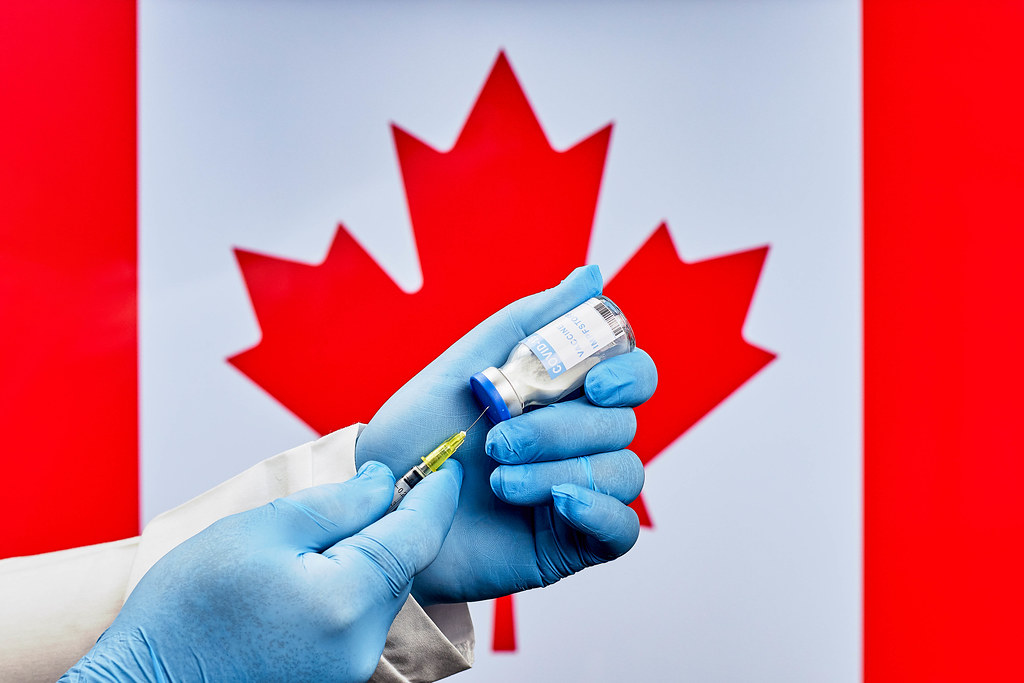

Overview
In partnership with Kaleidoscope Strategic, DailyClout presents a unique and compelling analysis of medical health data. The analysis of about six million unique patients’ data highlights the negative reproduction impacts — including serious menstrual harms and female and male fertility issues — of Canada’s COVID-19 state of emergency and rollout of COVID vaccines. The results can be extrapolated to all countries that have high mRNA COVID-19 vaccination rates.
The datasets Kaleidoscope Strategic used in this evaluation include information from years prior to the COVID pandemic and COVID vaccines as well as data from the during the pandemic and COVID vaccines years. Two Canadians obtained this January 2015 to December 2022 data, through two Freedom of Information (FOI) requests to the Ministry of Health Ontario, from the Ontario Health Insurance Plan (OHIP).
The two Canadian citizens, then partnered with research organization Kaleidoscope Strategic (@sense_covid) to analyze findings from the data, which includes OHIP billing codes — i.e., diagnostic codes used by OHIP for claims submissions by fee-for-service healthcare professionals in an outpatient setting. The dataset excludes data from salaried hospital and community laboratory groups unless those entities “shadow bill.” Canada has socialized healthcare – i.e., healthcare run by and provided by the government – which requires patients to go through a primary care doctor and then get referrals to specialists. Insurance claims must be submitted via Ontario’s medical claims electronic transfer. So, with rare exception, these data represent all Ontarians’ non-emergency healthcare diagnoses, including those related to Workplace Safety and Insurance Board (WSIB) and Reciprocal Medical Bill (RMB) claims. This provides a large, comprehensive dataset, which gives researchers the ability to see health trends and changes over a period of eight years (2015 through 2022).
The Data
In response to the FOI requests, OHIP produced two datasets:
- Female reproductive health and female cancer codes from a December 13, 2022, OHIP database query.
- Includes billing code data from January 1, 2015, to April 30, 2022.
- The initial set of codes mentioned above plus an extended set of codes from an August 25, 2023, OHIP database query.
- Includes billing code data for the full year of 2022.
- Although requested, OHIP did not provide historical (2015-2021) data for the additional set of codes.
The data exclude duplicate claims. They contain:
- Year
- Diagnosis
- Sex (male/female)
- Age band (0-17, 18-29, 30-39, 40-49, 50-59, 60-69, 70-79, 80+ years)
The billing codes in the data map to the Ontario Health Insurance Plan (OHIP) Diagnostic Codes.
When considering the data, note that the same patient may be diagnosed with different conditions and, thus, different codes. So, care must be taken when doing analyses to account for this. With that said, OHIP stated in the FOI response, “Incidence was defined as the first time a patient received the diagnosis code. Therefore, each patient was only counted once for a given diagnostic code within the entire reporting period (2015-01-01 to 2022-12-31).” Additionally, OHIP indicated, “Each patient was counted once per year, sex type code, diagnostic code and age band.”
COVID-19 Vaccine Uptake in Ontario
The 2015 to 2019 data provide a baseline of the pre-COVID years. In early 2020, COVID came on the scene; and then mRNA COVID vaccines, as well as other COVID vaccines, became widely available to the public starting in late 2020/early 2021. Over eighty-five percent of Ontarians had taken two doses of a COVID vaccine by March 30, 2022. About fifty percent received a third “booster” dose by that same date. In other words, Ontario has a highly vaccinated population.
Using Insurance Claims and Billing Data for Epidemiological Studies
Claims data, such as OHIP billing data, has been used extensively for epidemiological and health care studies. It offers strengths such as timeliness, wide availability, and low cost. If one assumes billing practices remain constant over time, trends extracted from billing data may reflect epidemiological trends. Claims data also has limitations. Transcriber-dependent variability may occur, and data may change over time due to changes in coding and/or shifts between outpatient and in-hospital visits. For the OHIP dataset, this is especially true since in-hospital events may not be covered under OHIP. As previously mentioned, the data do not include acute care and private clinic billing information. Additionally, claims data do not contain information on stage or progression of malignancies. One must look at claims data changes over time to detect trends.
Women’s Health Impacted by Vaccine Harms More Than Men
According to Pfizer’s early report of post-approval pharmacovigilance data, COVID vaccines harmed women significantly more than men. About three-quarters of adverse events with gender information reported during the first three months post-vaccine rollout were in females.
- Women experienced “unusual menstruation patterns” (https://www.science.org/content/article/thousands-report-unusual-menstruation-patterns-after-covid-19-vaccination) and “unexpected vaginal bleeding” (https://www.science.org/doi/10.1126/sciadv.adg1391).
- Preclinical biodistribution studies (https://www.phmpt.org/wp-content/uploads/2022/03/125742_S1_M4_4223_185350.pdf) showed that at 48 hours post-vaccination, ovaries contained 12.30 µg/g mean total lipid concentration from Pfizer’s BNT162 vaccine versus 0.320 µg/g mean lipid concentration in the testes.
- Menstrual disorders (OHIP code 626) trended down from 2015 to 2019. In 2021, when COVID vaccines became widely available to the public, that changed; and 2021 billing data reflected an appreciable bump upwards. One must keep in mind, too, that many women may have avoided going to see a doctor about menstrual changes either due to fear of encountering COVID by going out and/or because their symptoms were not severe enough to drive them to seek professional care.
- Similarly, menopausal and post-menopausal bleeding (OHIP code 627) increased in 2021 and 2022 once much of the population had received COVID vaccines.
- It is not surprising that as menstrual disorders increased in 2021 and 2022 so did female infertility.
- Additionally, OHIP code 629 – “Other Disorders of Female Genital Organs” – reveals a marked increase in diagnoses in 2021 and 2022.
- Sadly, OHIP codes 632 and 634, for “Missed, Incomplete, or Complete Abortion,” noticeably escalated after widespread uptake of COVID vaccines among Ontario’s population.
- Still, live birth counts remained fairly constant from 2015 to 2022 with a slight drop during 2020 and 2021 and a partial recovery in 2021-2022. Births in 2021 through 2022, following the initial dip in 2020-2021, remain lower than in 2019-2020 and previous years.
Men’s Health Also Negatively Impacted by COVID Vaccines
Do the data show that male fertility was affected, too? In short, yes, they do. OHIP code 606 – male infertility, oligospermia (low sperm count), and azoospermia (absence of sperm in semen) – shows a notable increase in both 2021 and 2022 over 2019.
COVID-19 and Spike Protein-Related Effects on Human Reproductive Health
COVID-19 and its spike protein, present in the body via COVID infection and/or COVID vaccination, negatively impact humans’ reproductive health in multiple ways:
- Disturbed endometrial decidualization
- Embryo implantation defects
- Disturbed development of the early embryo
- Pre-eclampsia
- Spontaneous abortion/miscarriage
- Higher morbidity and mortality
- Inflammation
- Oxidative stress and the negative health outcomes associated with it
Calls for Action
In light of the alarming results uncovered by Kaleidoscope Strategic’s research into the OHIP data, additional actions must be taken to protect humanity from COVID vaccine-related harms. These actions include:
- Do more research.
- Further investigate in well-controlled prospective trials.
- Pause mRNA COVID vaccination in pregnant and lactating women, as well as in men of reproductive age, until safety issues are fully investigated.
Below, DailyClout presents the full Kaleidoscope Strategic analysis, “Impact of COVID-19 State of Emergency on Female Reproduction.”
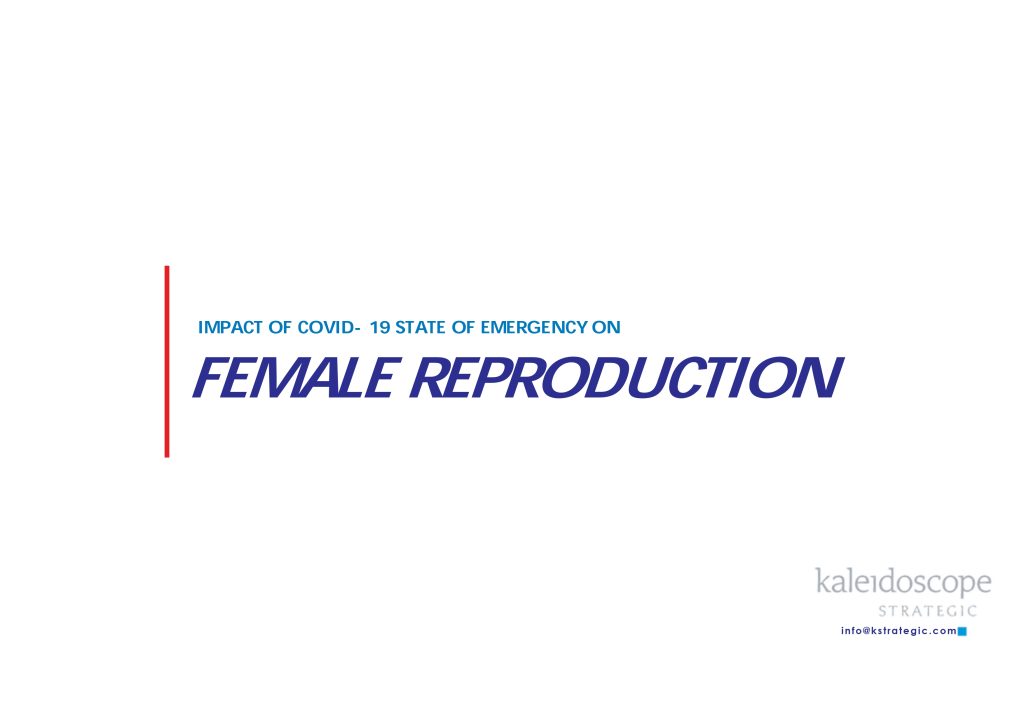
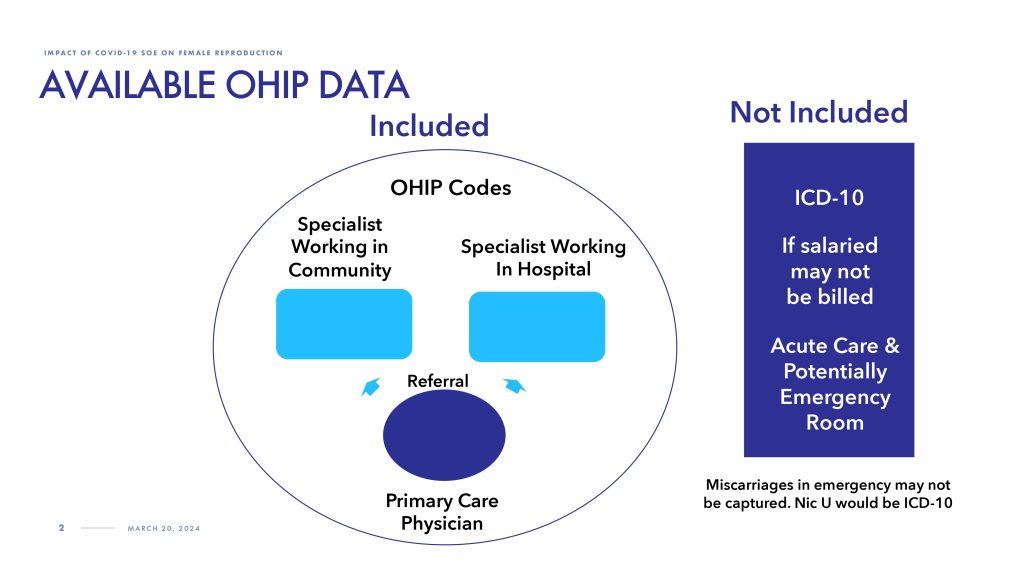
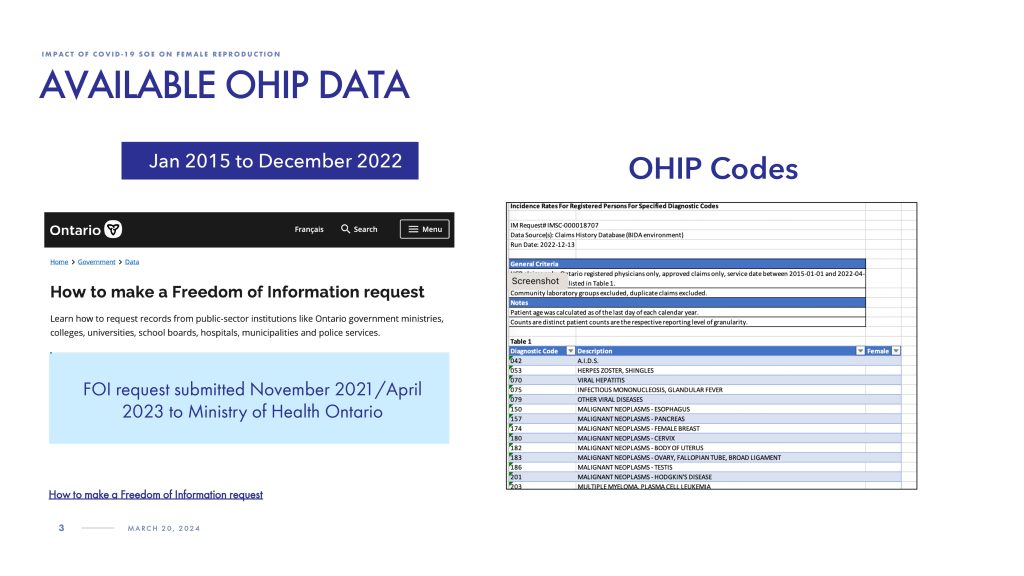
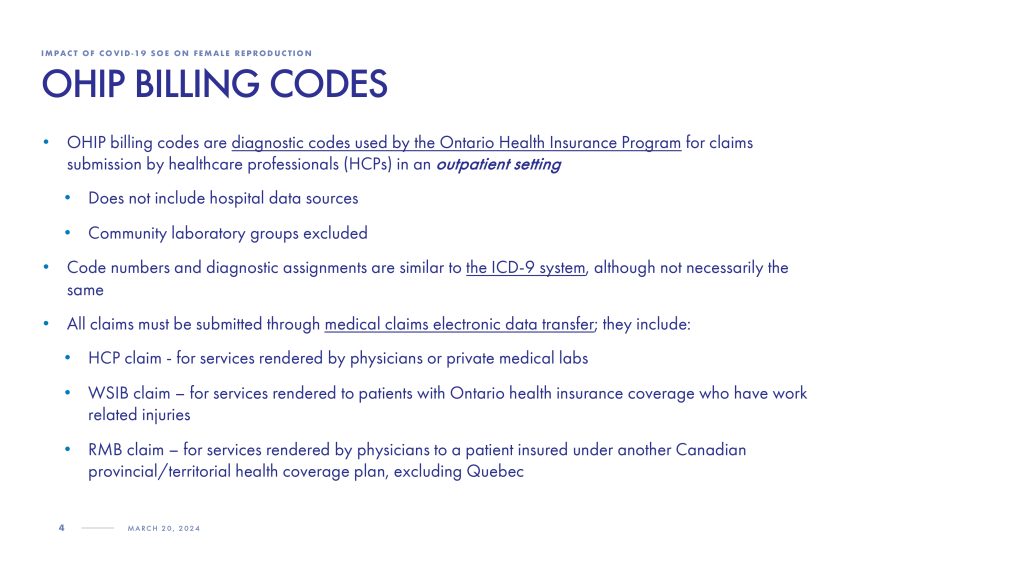

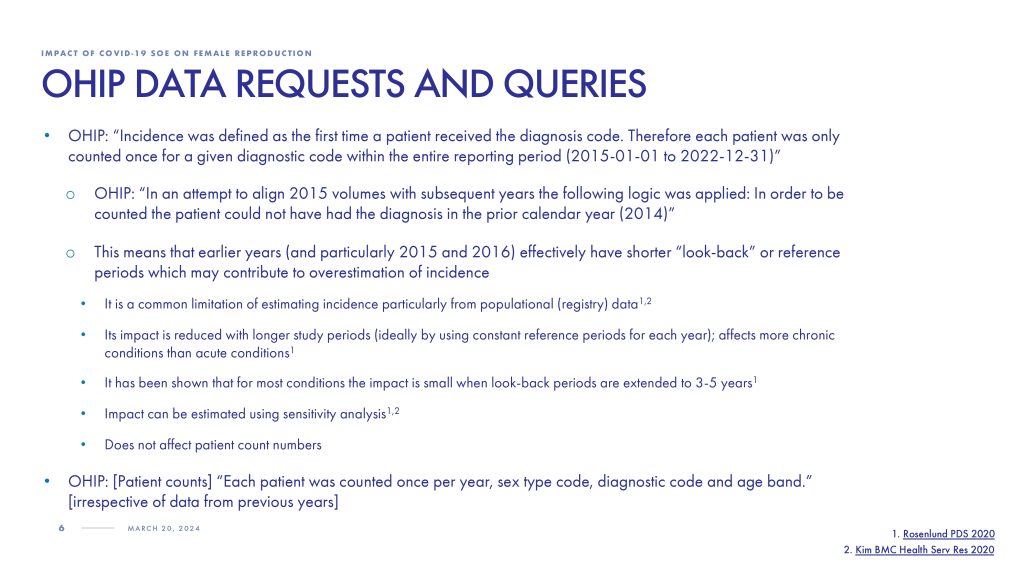
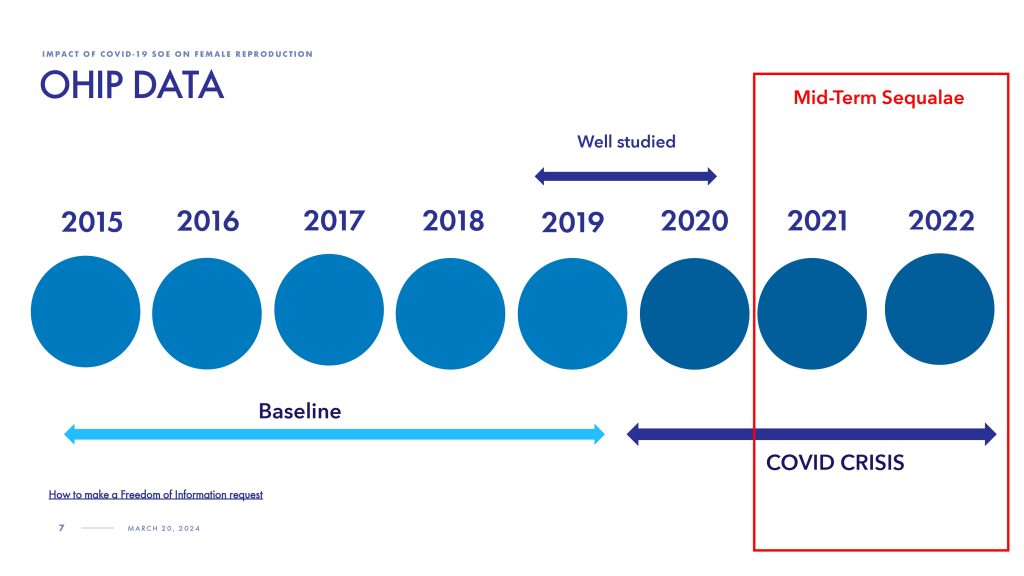
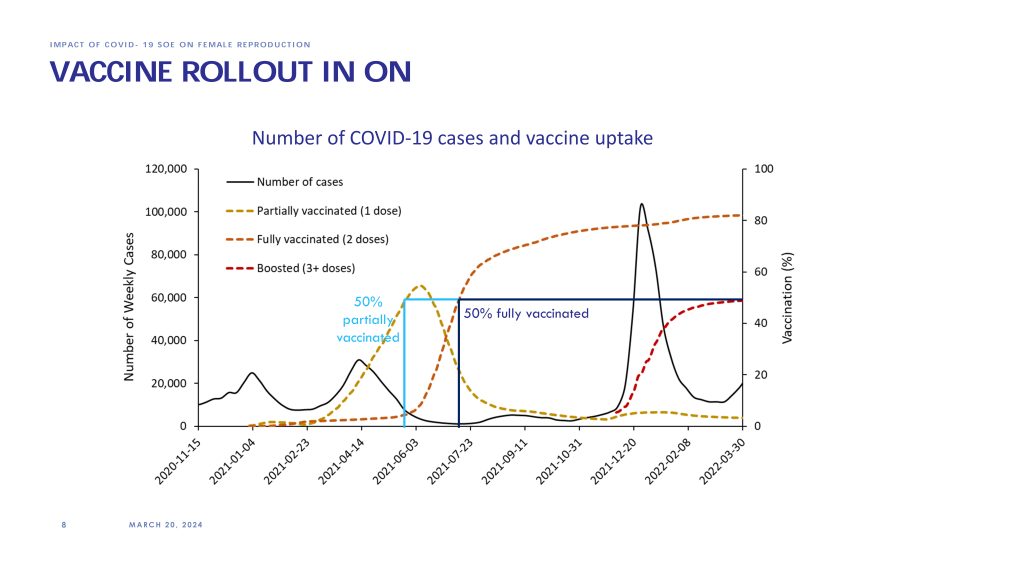
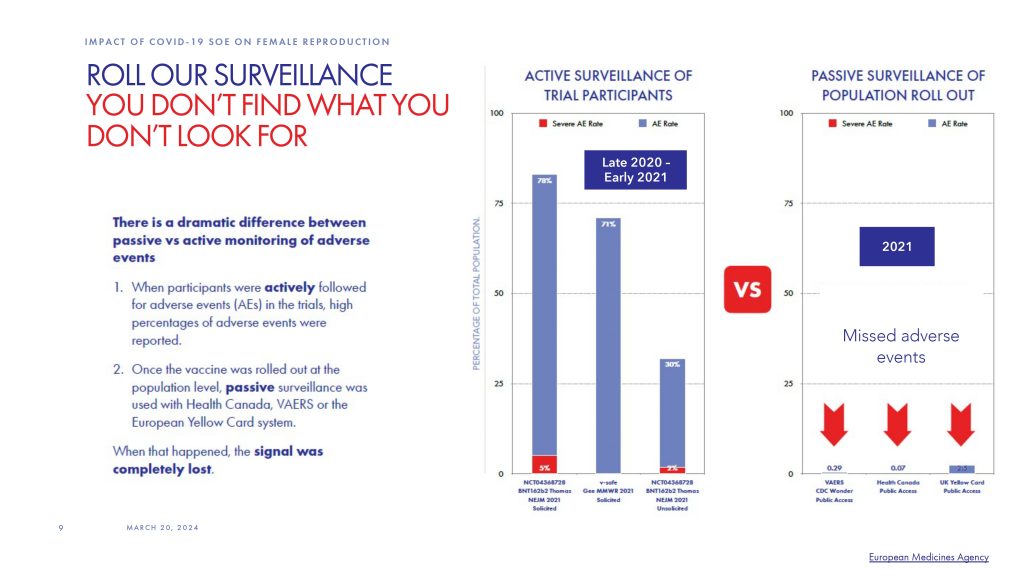
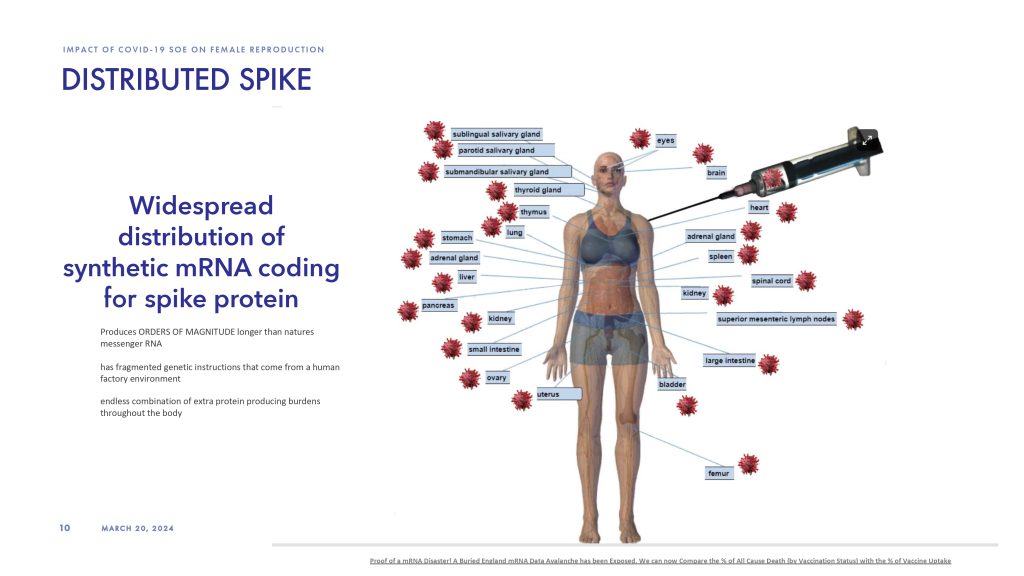

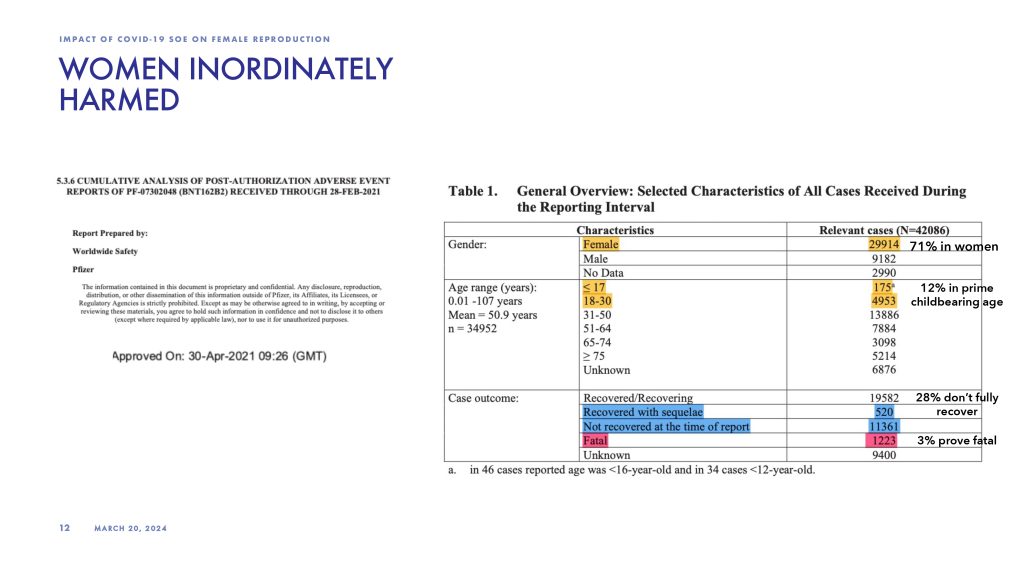
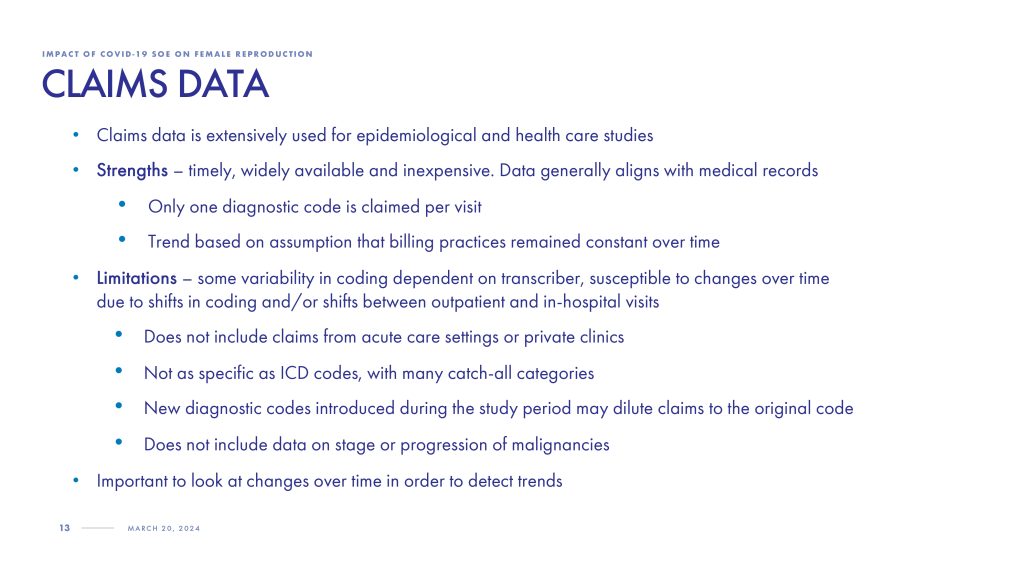


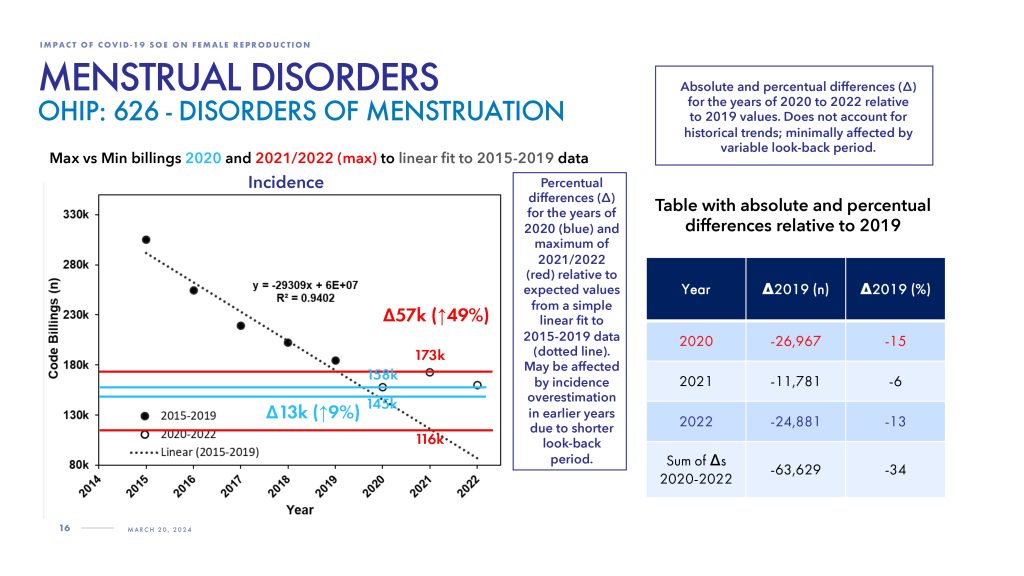
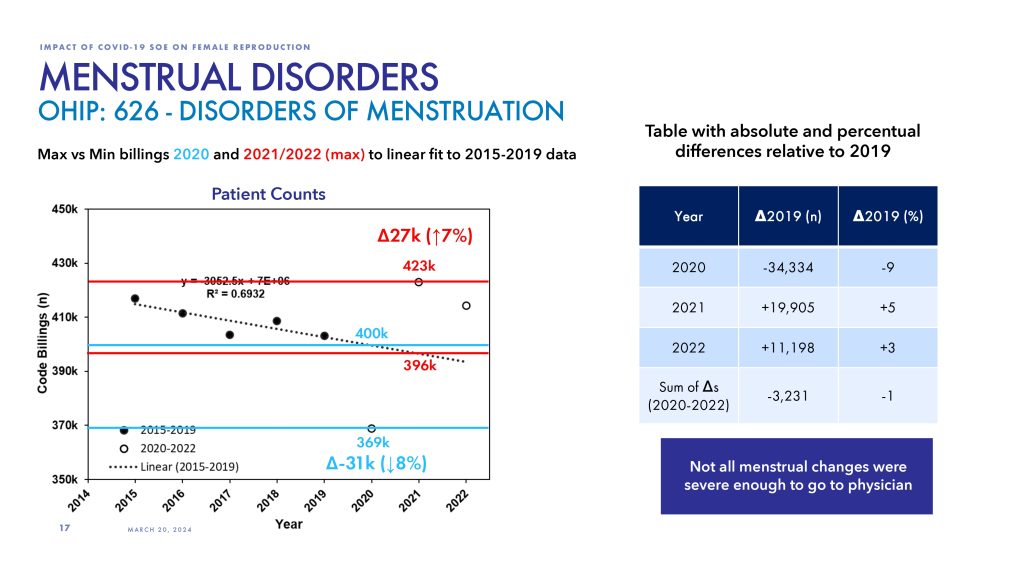
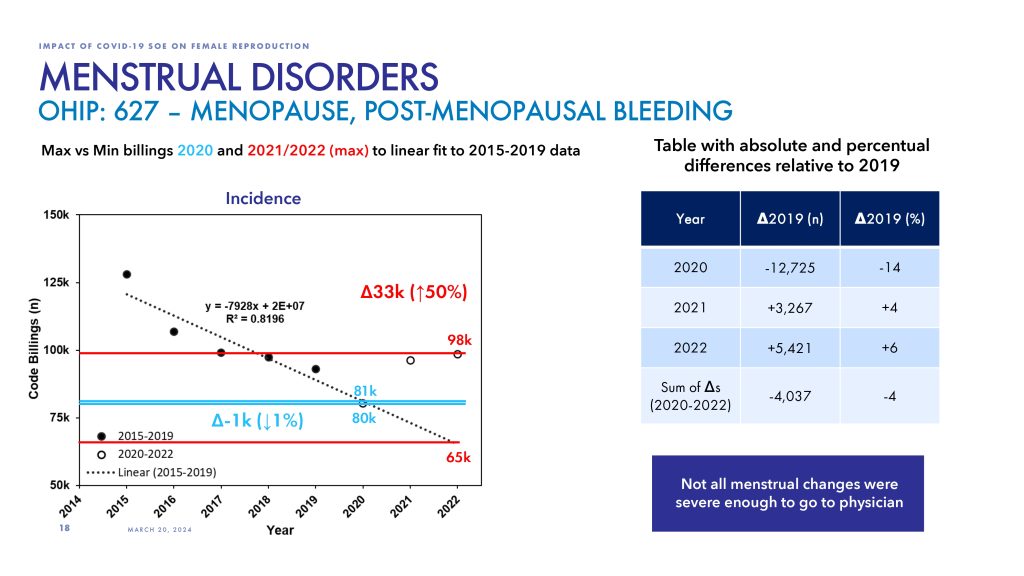
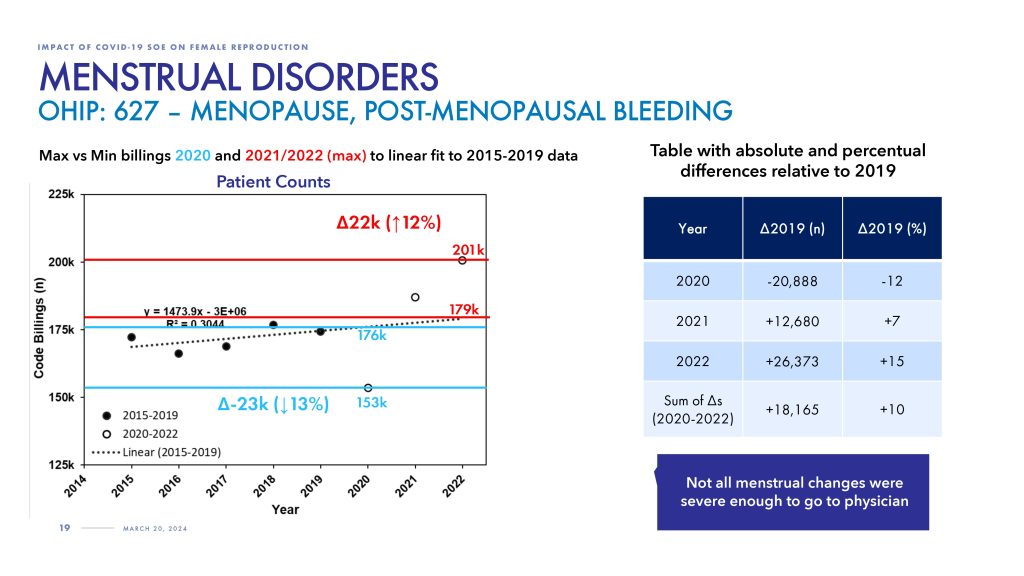
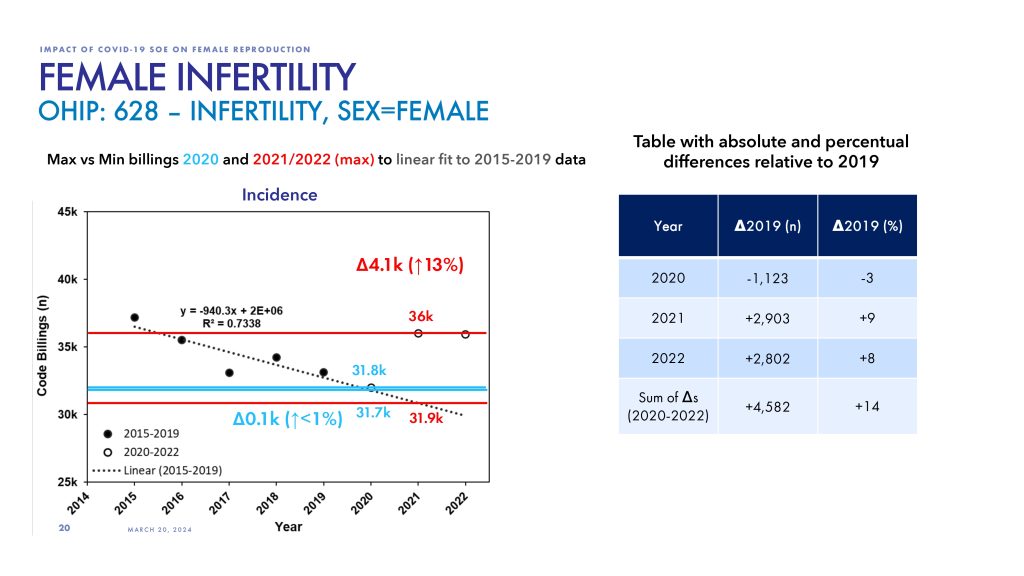
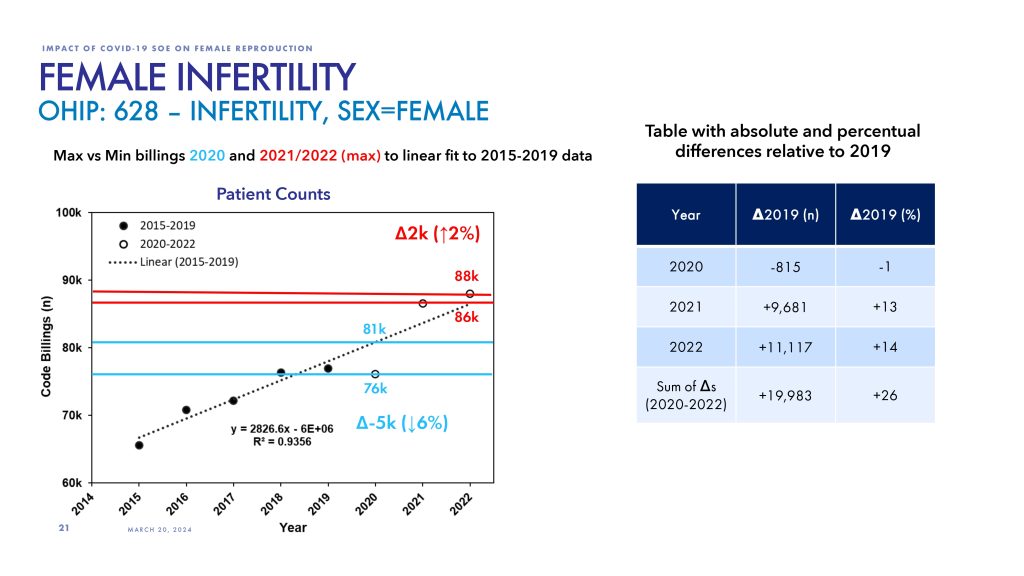

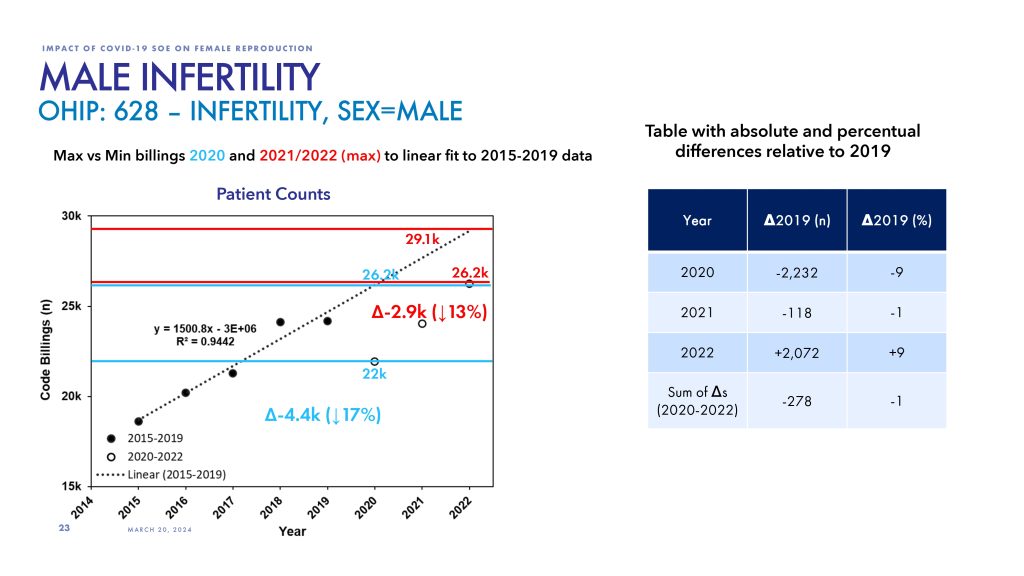
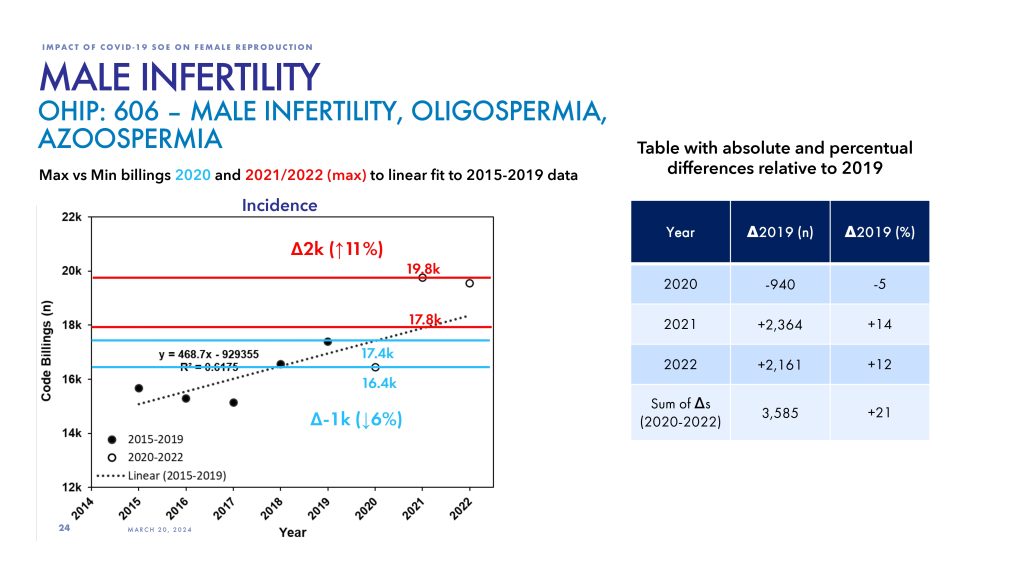


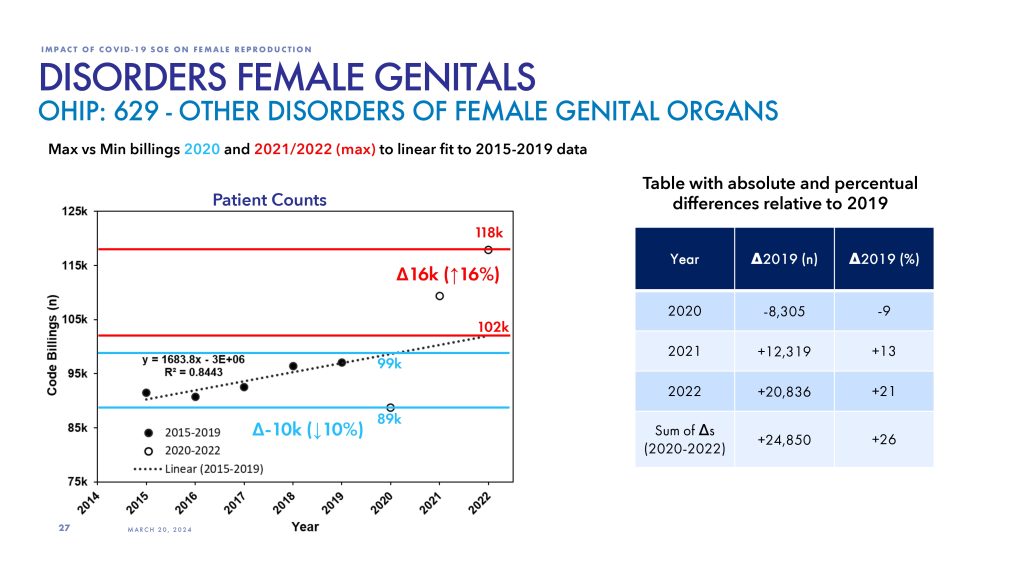

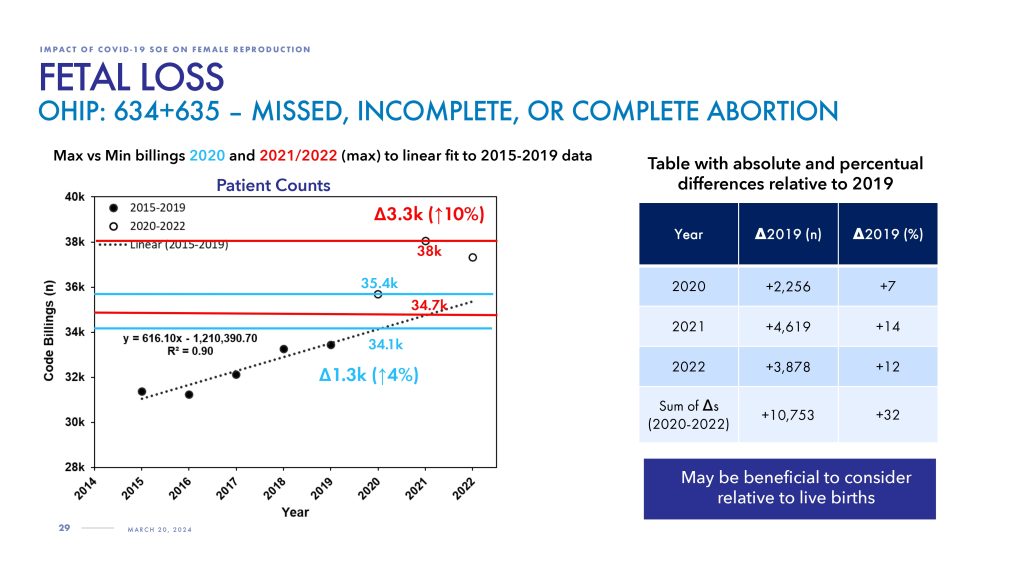

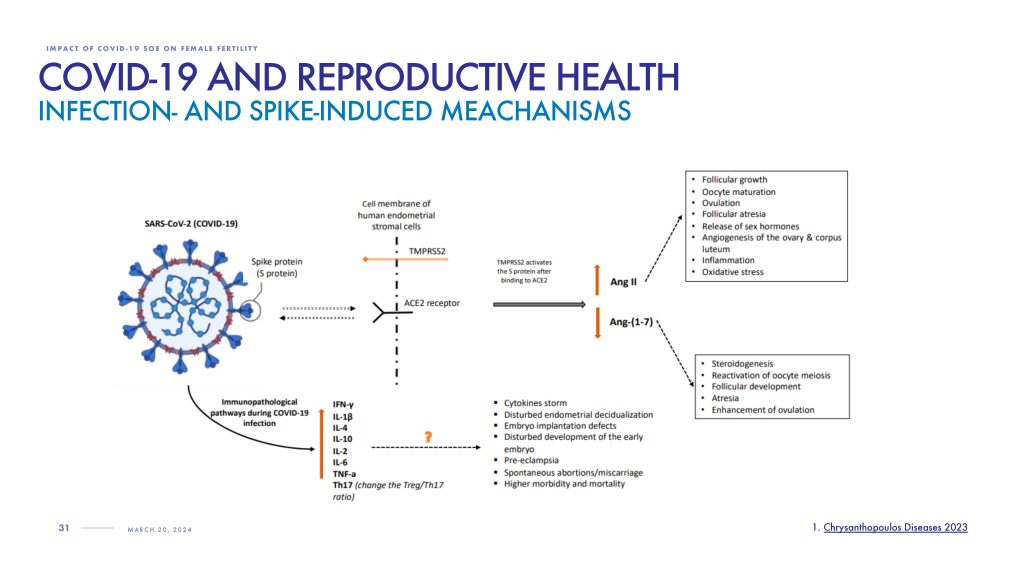

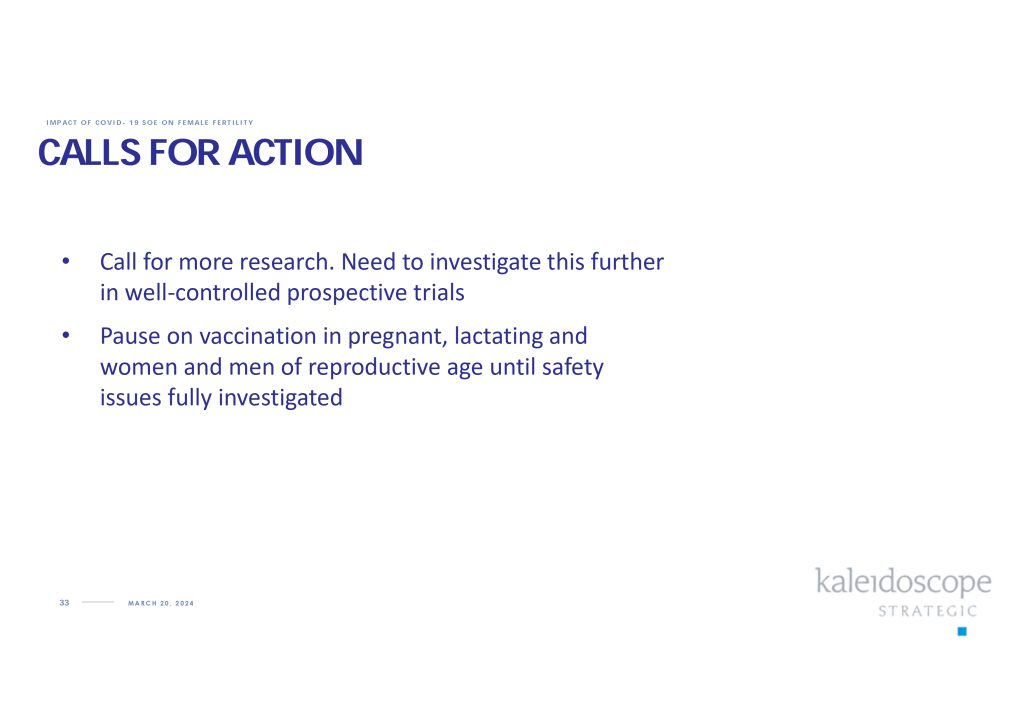
Become a DailyClout Member.
Pre-Order The Pfizer Papers Book.



